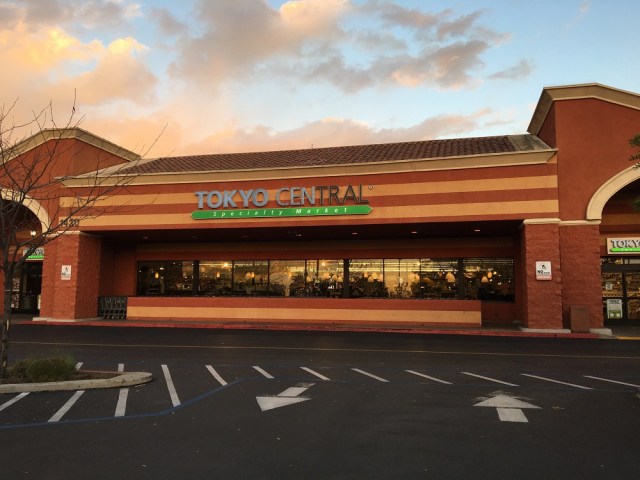
Looking for a taste of home-away-from-home while back home.
Growing up in sunny southern California didn’t do much to condition me against the cold of a Japanese winter, so when there’s an opportunity to head back to my hometown at this time of year, I’m grateful for it. One downside to being in the Golden State instead of the Land of the Rising Sun, though, is the risk of missing out on Japan’s custom of eating ehomaki for Setsubun.
To recap, Setsubun, celebrated on February 3, was the final day of winter according to Japanese folklore. In order to secure prosperity for yourself and your family in the coming year, one of the rituals you’re supposed to engage in is eating an ehomaki, a huge, luxurious sushi roll.
In Japan, ehomaki can be easily found at specialty shops, supermarkets, and even convenience stores in the runup to Setsubun, so I’ve been able to perform the solemn duty of eating sushi in order to secure my household’s happiness with pretty solid regularity. Being in the U.S. for Setsubun this year, though, I was worried about what sorts of calamities might befall me in the year to come if I failed to observe the culinary custom, and so I went searching for ehomaki in America.
Thankfully, the Los Angeles area has a small chain of Japanese specialty grocery stores called Tokyo Central, which began under the name Marukai and is now affiliated with Don Quijote, the Japanese megastore that sells pretty much everything.
▼ Tokyo Central even follows Don Quijote’s hand-lettered-sign aesthetics, and you’ll see Donpen, the Don Quijote mascot character penguin, here and there throughout the store.
Similar to grocery stores in Japan, Tokyo Central has a large section for “delica,” or pre-prepared dishes. That includes rice bowls, bento, Japanese-style noodles, and even pasta and sandwiches. This being the U.S., though, the clientele at a Japanese food-oriented market is especially interested in sushi, so Tokyo Central’s delica corner all-stars are the packs of nigiri sushi and sushi rolls. Some of the rolls are Americanized standards like spicy tuna or crunch rolls, but they have more authentically Japanese varieties too.
When I stopped by, it was February 2, technically still one day before Setsubun, but there they were: ehomaki!
▼ 恵方巻 = ehomaki
For the uninitiated, they were also labeled as “lucky rolls,” but there was also an English-alphabet rendering of “eho maki,” making this not just a meal, but a mini language lesson too. Most importantly, the rolls were left uncut, since you’re supposed to grab the ehomaki with both hands while biting into it to properly perform the prosperity ritual.
There were also seafood ehomaki and an ehomaki “combo,” but in the end I opted for the standard ehomaki. At US$7.99, it felt like a pretty good deal, considering that there’s always been a premium for premade sushi in the U.S., even before the country’s currently rapidly rising consumer prices.
So what makes an ehomaki an ehomaki? There’s no set specification, but an ehomaki needs to be stuffed with both a large number and a large quantity of fillings, since the whole idea is that eating something hearty and luxurious on the last day of winter will set the tone for an entire year of bold happiness.
Tokyo Central’s ehomaki had nice big pieces of kanikama (imitation crab), tamagoyaki (egg), and cucumber, plus a lot of kampyo (stewed gourd).
When eating your ehomaki, it’s critical to do so while facing in the correct direction. The direction changes from year-to-year, but for this year it was east-northeast, so after checking the compass and lining up the sushi roll…
…it was time to dig in!
So how was this bite of Japanese culture taken in the U.S.? Honestly pretty good! One of the biggest differences foodies notice between eating sushi in Japan and overseas is the quality of the rice. Outside of Japan, sushi rice often has either too little vinegar or not enough, and the grains are often either dry and crumbly or mashed and mushed together. Tokyo Central’s ehomaki had none of those problems, though, with just the right flavor and consistency to the rice. The other ingredients were all high-quality too, on par with what you’d expect from a supermarket-bought sushi roll ehomaki with these fillings in Japan.
If I’m being picky, I could have gone for a bit more luxury in the fillings, maybe a nice thick slice of tuna for an extra burst of flavorful protein. All in all, though, this definitely did the job of providing an ehomaki experience in America, and it’s nice to know I didn’t miss my chance to get this year’s does of Setsubun sushi good luck.
Related: Tokyo Central location list
Photos ©SoraNews24
● Want to hear about SoraNews24’s latest articles as soon as they’re published? Follow us on Facebook and Twitter!
Follow Casey on Twitter as he continues to try to bring Japan and America together through food.

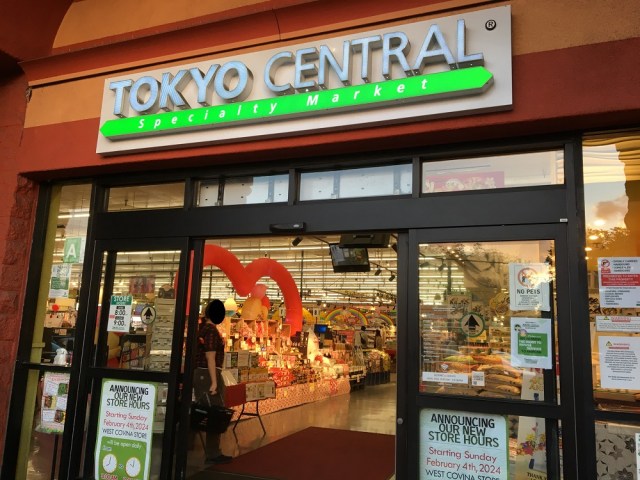
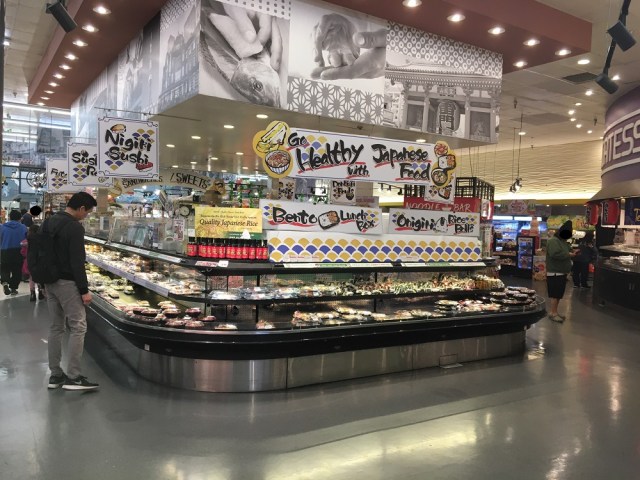
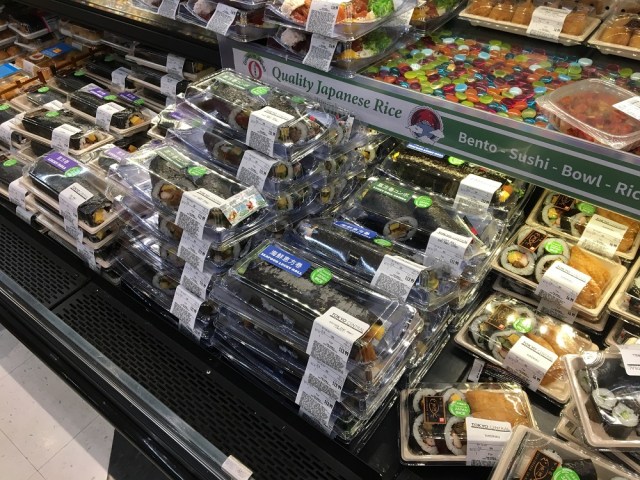
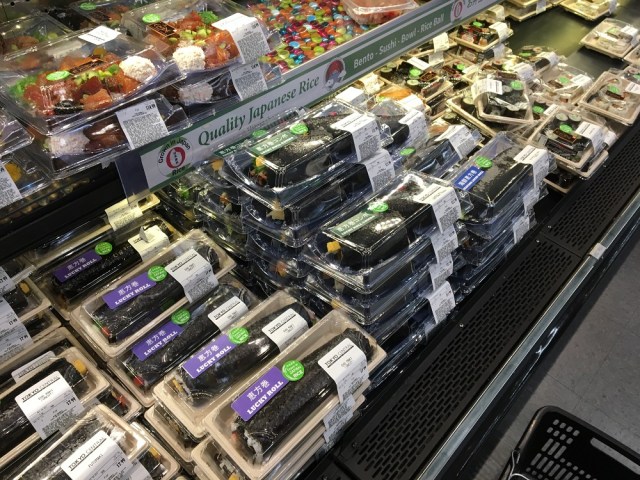

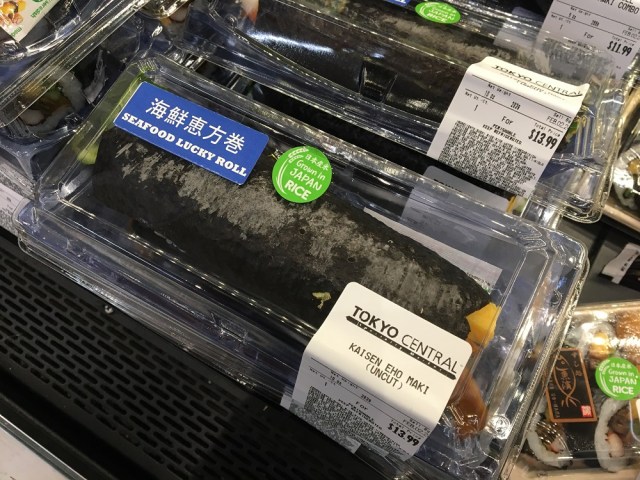
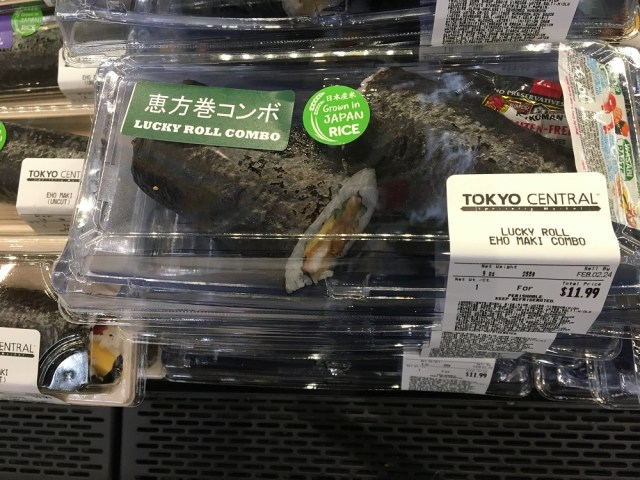
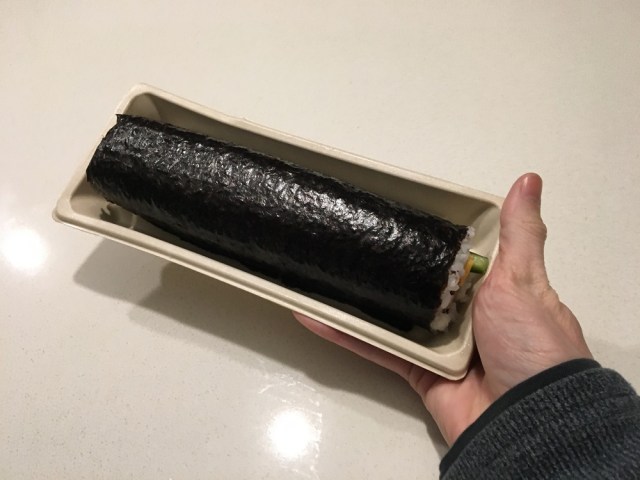
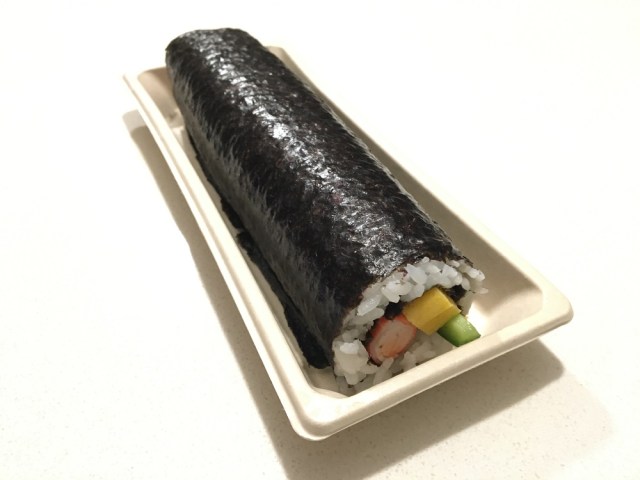
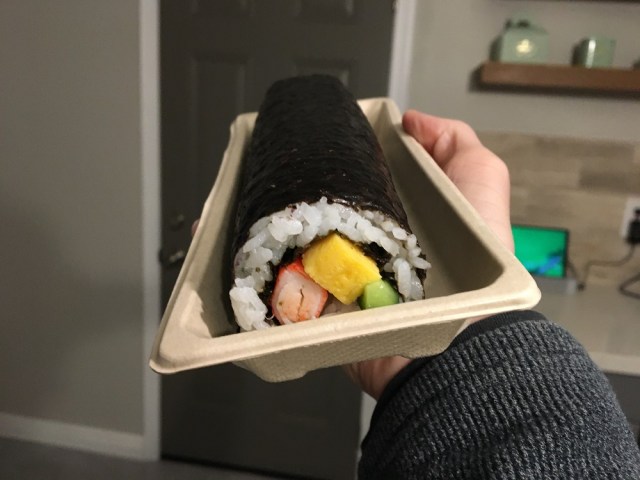
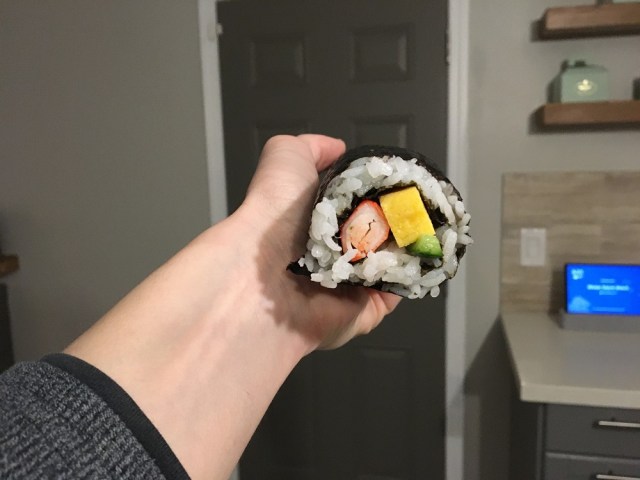


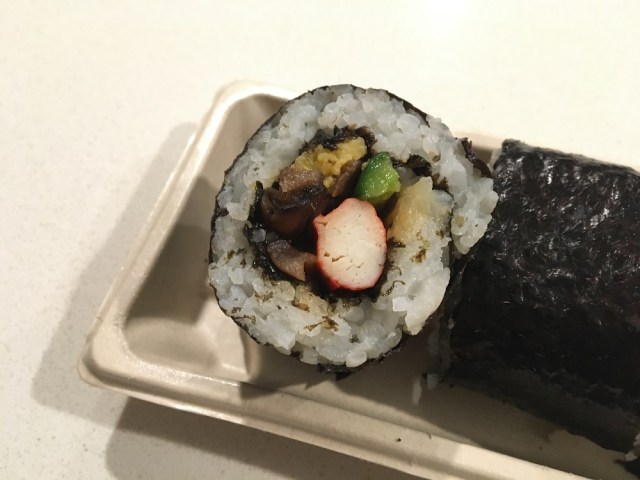
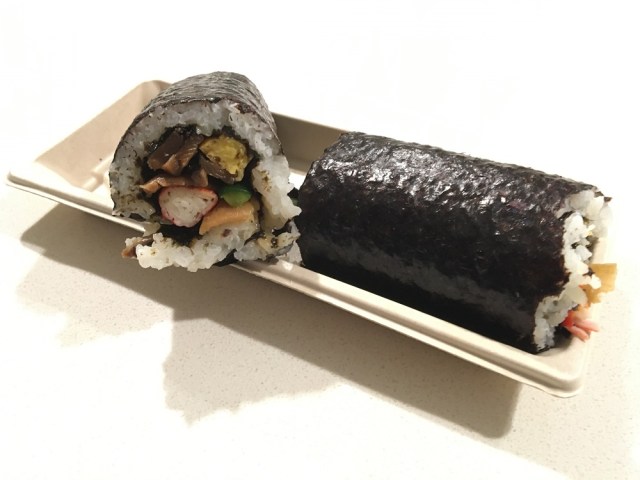
 Which Japanese convenience store has the best lucky sushi roll? Unclear results show clear winner
Which Japanese convenience store has the best lucky sushi roll? Unclear results show clear winner Japanese department store wishes you a good year ahead with 150 types of delicious ehomaki
Japanese department store wishes you a good year ahead with 150 types of delicious ehomaki Dean & DeLuca now has fancy good luck sushi rolls to help Japan celebrate Setsubun【Photos】
Dean & DeLuca now has fancy good luck sushi rolls to help Japan celebrate Setsubun【Photos】 Pray for sound health for your beloved pets this Setsubun with special good luck sushi rolls just for them
Pray for sound health for your beloved pets this Setsubun with special good luck sushi rolls just for them Lucky sushi rolls coming to Kansai Aeon stores again for “Summer Setsubun”
Lucky sushi rolls coming to Kansai Aeon stores again for “Summer Setsubun” Foreigner’s request for help in Tokyo makes us sad for the state of society
Foreigner’s request for help in Tokyo makes us sad for the state of society Japanese city loses residents’ personal data, which was on paper being transported on a windy day
Japanese city loses residents’ personal data, which was on paper being transported on a windy day Seaside scenery, history, and so many desserts on Yokohama’s Akai Kutsu【Japan Loop Buses】
Seaside scenery, history, and so many desserts on Yokohama’s Akai Kutsu【Japan Loop Buses】 Red light district sushi restaurant in Tokyo shows us just how wrong we were about it
Red light district sushi restaurant in Tokyo shows us just how wrong we were about it Harajuku Station’s beautiful old wooden building is set to return, with a new complex around it
Harajuku Station’s beautiful old wooden building is set to return, with a new complex around it Should you add tartar sauce to Japanese curry rice? CoCo Ichi makes diners an unusual offer
Should you add tartar sauce to Japanese curry rice? CoCo Ichi makes diners an unusual offer Smash Bros. director Sakurai stabs Kirby in the face, has delicious justification for it
Smash Bros. director Sakurai stabs Kirby in the face, has delicious justification for it Historical figures get manga makeovers from artists of Spy x Family, My Hero Academia and more
Historical figures get manga makeovers from artists of Spy x Family, My Hero Academia and more French Fries Bread in Tokyo’s Shibuya becomes a hit on social media
French Fries Bread in Tokyo’s Shibuya becomes a hit on social media Mt. Koya planning to instate visitor’s tax to cope with huge tourist numbers
Mt. Koya planning to instate visitor’s tax to cope with huge tourist numbers McDonald’s new Happy Meals offer up cute and practical Sanrio lifestyle goods
McDonald’s new Happy Meals offer up cute and practical Sanrio lifestyle goods Japanese ramen restaurants under pressure from new yen banknotes
Japanese ramen restaurants under pressure from new yen banknotes Studio Ghibli releases new action figures featuring Nausicaä of the Valley of the Wind characters
Studio Ghibli releases new action figures featuring Nausicaä of the Valley of the Wind characters New private rooms on Tokaido Shinkansen change the way we travel from Tokyo to Kyoto
New private rooms on Tokaido Shinkansen change the way we travel from Tokyo to Kyoto Tokyo Tsukiji fish market site to be redeveloped with 50,000-seat stadium, hotel, shopping center
Tokyo Tsukiji fish market site to be redeveloped with 50,000-seat stadium, hotel, shopping center Beautiful Ghibli sealing wax kits let you create accessories and elegant letter decorations【Pics】
Beautiful Ghibli sealing wax kits let you create accessories and elegant letter decorations【Pics】 Studio Ghibli releases Kiki’s Delivery Service chocolate cake pouches in Japan
Studio Ghibli releases Kiki’s Delivery Service chocolate cake pouches in Japan New definition of “Japanese whiskey” goes into effect to prevent fakes from fooling overseas buyers
New definition of “Japanese whiskey” goes into effect to prevent fakes from fooling overseas buyers Our Japanese reporter visits Costco in the U.S., finds super American and very Japanese things
Our Japanese reporter visits Costco in the U.S., finds super American and very Japanese things All-you-can-drink Starbucks and amazing views part of Tokyo’s new 170 meter-high sky lounge
All-you-can-drink Starbucks and amazing views part of Tokyo’s new 170 meter-high sky lounge More foreign tourists than ever before in history visited Japan last month
More foreign tourists than ever before in history visited Japan last month New Pokémon cakes let you eat your way through Pikachu and all the Eevee evolutions
New Pokémon cakes let you eat your way through Pikachu and all the Eevee evolutions Disney princesses get official manga makeovers for Manga Princess Cafe opening in Tokyo
Disney princesses get official manga makeovers for Manga Princess Cafe opening in Tokyo Sales of Japan’s most convenient train ticket/shopping payment cards suspended indefinitely
Sales of Japan’s most convenient train ticket/shopping payment cards suspended indefinitely Sold-out Studio Ghibli desktop humidifiers are back so Totoro can help you through the dry season
Sold-out Studio Ghibli desktop humidifiers are back so Totoro can help you through the dry season Japanese government to make first change to romanization spelling rules since the 1950s
Japanese government to make first change to romanization spelling rules since the 1950s Ghibli founders Toshio Suzuki and Hayao Miyazaki contribute to Japanese whisky Totoro label design
Ghibli founders Toshio Suzuki and Hayao Miyazaki contribute to Japanese whisky Totoro label design Doraemon found buried at sea as scene from 1993 anime becomes real life【Photos】
Doraemon found buried at sea as scene from 1993 anime becomes real life【Photos】 Tokyo’s most famous Starbucks is closed
Tokyo’s most famous Starbucks is closed One Piece characters’ nationalities revealed, but fans have mixed opinions
One Piece characters’ nationalities revealed, but fans have mixed opinions We asked a Uniqlo employee what four things we should buy and their suggestions didn’t disappoint
We asked a Uniqlo employee what four things we should buy and their suggestions didn’t disappoint Princesses, fruits, and blacksmiths: Study reveals the 30 most unusual family names in Japan
Princesses, fruits, and blacksmiths: Study reveals the 30 most unusual family names in Japan Can you make a proper ehomaki lucky sushi roll with Daiso equipment?
Can you make a proper ehomaki lucky sushi roll with Daiso equipment? Cost of uneaten ehomaki sushi rolls in 2022 estimated to be over one billion yen
Cost of uneaten ehomaki sushi rolls in 2022 estimated to be over one billion yen Behold a 10,000-yen sushi roll covered in gold! 【Taste Test】
Behold a 10,000-yen sushi roll covered in gold! 【Taste Test】 Sushiro celebrates a traditional Japanese holiday with this…sushi thing
Sushiro celebrates a traditional Japanese holiday with this…sushi thing Subway rivals a traditional Japanese sushi roll with its own traditional Japanese BLT
Subway rivals a traditional Japanese sushi roll with its own traditional Japanese BLT The greatest sushi roll in Japanese history is actually nine sushi rolls in one【Photos】
The greatest sushi roll in Japanese history is actually nine sushi rolls in one【Photos】 How to deal with sushi harassment in the workplace
How to deal with sushi harassment in the workplace Japan’s crazy 6,000-calorie sushi roll includes a pizza as a topping
Japan’s crazy 6,000-calorie sushi roll includes a pizza as a topping Japanese miko shrine maidens turn into off-road racing queens in new commercial 【Video】
Japanese miko shrine maidens turn into off-road racing queens in new commercial 【Video】 $89 “Phantasmal Sushi Roll” fancies up life with Matsusaka beef and truffle salt 【Taste Test】
$89 “Phantasmal Sushi Roll” fancies up life with Matsusaka beef and truffle salt 【Taste Test】 Demon babies spotted in Japanese newborns ward, overpower Internet with their cuteness
Demon babies spotted in Japanese newborns ward, overpower Internet with their cuteness How to have a great meal at conveyer belt sushi chain Kura Sushi even if you hate raw fish
How to have a great meal at conveyer belt sushi chain Kura Sushi even if you hate raw fish Supermarket sushi becomes a hot topic with foreigners on Reddit, but is it any good?
Supermarket sushi becomes a hot topic with foreigners on Reddit, but is it any good? Big Cock Roll wows the taste buds at Japanese restaurant in Saitama
Big Cock Roll wows the taste buds at Japanese restaurant in Saitama A feast for all sushi lovers — the amazing 1,000-yen lunch at Sushi Takehan Wakatsuki!
A feast for all sushi lovers — the amazing 1,000-yen lunch at Sushi Takehan Wakatsuki!
Leave a Reply